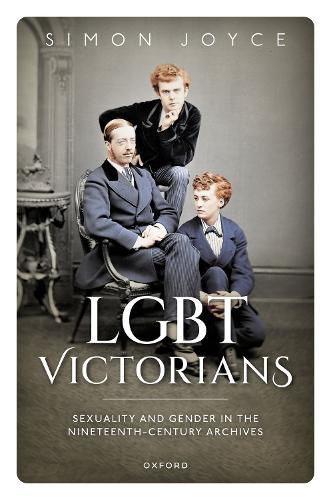Readings Newsletter
Become a Readings Member to make your shopping experience even easier.
Sign in or sign up for free!
You’re not far away from qualifying for FREE standard shipping within Australia
You’ve qualified for FREE standard shipping within Australia
The cart is loading…






It has been decades since Michel Foucault urged us to rethink the repressive hypothesis and see new forms of sexual discourse as coming into being in the nineteenth century, yet the term Victorian still has largely negative connotations. LGBT Victorians argues for re-visiting the period’s thinking about gender and sexual identity at a time when our queer alliances are fraying. We think of those whose primary self-definition is in terms of sexuality (lesbians, gay men, bisexuals) and those for whom it is gender identity (intersex and transgender people, genderqueers) as simultaneously in coalition and distinct from each other, on the assumption that gender and sexuality are independent aspects of self-identification. Re-examining how the Victorians considered such identity categories to have produced and shaped each other can ground a more durable basis for strengthening our present LGBTQ+ coalition.
LGBT Victorians draws on scholarship reconsidering the significance of sexology and efforts to retrospectively discover transgender people in historical archives, particularly in the gap between what the nineteenth century termed the sodomite and the hermaphrodite. It highlights a broad range of individuals (including Anne Lister, and the defendants in the Fanny and Stella trial of the 1870s), key thinkers and activists (including Karl-Heinrich Ulrichs and Edward Carpenter), and writers such as Walt Whitman and John Addington Symonds to map the complicated landscape of gender and sexuality in the Victorian period. In the process, it decenters Oscar Wilde and his imprisonment from our historical understanding of sexual and gender nonconformity.
$9.00 standard shipping within Australia
FREE standard shipping within Australia for orders over $100.00
Express & International shipping calculated at checkout
It has been decades since Michel Foucault urged us to rethink the repressive hypothesis and see new forms of sexual discourse as coming into being in the nineteenth century, yet the term Victorian still has largely negative connotations. LGBT Victorians argues for re-visiting the period’s thinking about gender and sexual identity at a time when our queer alliances are fraying. We think of those whose primary self-definition is in terms of sexuality (lesbians, gay men, bisexuals) and those for whom it is gender identity (intersex and transgender people, genderqueers) as simultaneously in coalition and distinct from each other, on the assumption that gender and sexuality are independent aspects of self-identification. Re-examining how the Victorians considered such identity categories to have produced and shaped each other can ground a more durable basis for strengthening our present LGBTQ+ coalition.
LGBT Victorians draws on scholarship reconsidering the significance of sexology and efforts to retrospectively discover transgender people in historical archives, particularly in the gap between what the nineteenth century termed the sodomite and the hermaphrodite. It highlights a broad range of individuals (including Anne Lister, and the defendants in the Fanny and Stella trial of the 1870s), key thinkers and activists (including Karl-Heinrich Ulrichs and Edward Carpenter), and writers such as Walt Whitman and John Addington Symonds to map the complicated landscape of gender and sexuality in the Victorian period. In the process, it decenters Oscar Wilde and his imprisonment from our historical understanding of sexual and gender nonconformity.